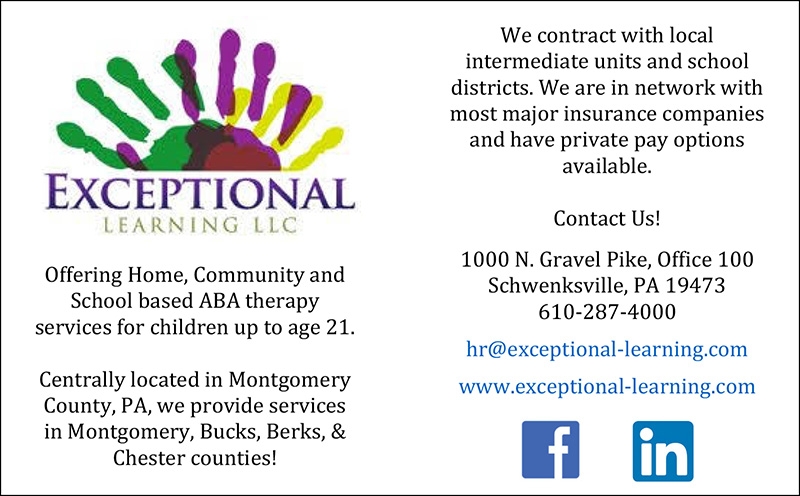Current data suggest that if a family has one child with Autism Spectrum Disorder (ASD), the chance their second child will also have that diagnosis is 2-18% (Autism Speaks, 2020). If the family has two or more children with ASD, the risk their next child will also have ASD increases to 30% (The Australian Parenting Website, 2020). With each child, it is important to discuss any concerns regarding his or her development with your developmental pediatrician. Monitoring developmental milestones for younger siblings can be key to an early diagnosis. Early red flags to look for include a lack of joint attention, imitation, simple pretend play, and interest in peers (Barton & Harn, 2014). Early diagnosis is key to accessing early intervention and quality programming.

Individualizing a program for a child with an ASD diagnosis can be difficult at times, but programming for multiple siblings with ASD within the same household presents its’ own unique challenge. Quality programming should include goals to address cognitive, behavioral, communication, functional living, play, and social skills. Programs that effectively address each of these areas will allow children to be successful in both typical settings and novel environments. These programs are derived from a variety of assessments that include the Assessment of Basic Language and Learning Skills (ABLLS), Assessment of Functional Living Skills (AFLS), Essential for Living (EFL), Promoting Emergence of Advanced Knowledge (PEAK), Verbal Behavior Milestones Assessment and Placement Program (VB-MAPP), and Functional Behavior Assessments (FBAs). The assessment that your child’s clinician chooses to use is based on their current skill set, treatment goals, and clinician training. Therefore, it is possible that one assessment will be used to develop programming for your older child and a separate assessment will be used to develop your younger child’s program!
While programming should be individualized for each child, families will have greater success implementing programs if there is some consistency across their children’s programs. For example, families can develop a schedule to structure their day, and during some blocks of time the siblings may be prompted to engage in a group activity and at other times each child completes an independent activity. The activities included on the schedule will vary depending on your children’s current skill level and treatment plan goals, or a group activity can be adapted accordingly. As an example, when playing Candy Land one child may simply be prompted to pick a card or move their piece while a second child may be asked to name the square color or count the number of spaces he moves. Increasing replacement behaviors throughout the day, such as independence with functional skills and communication, can help to decrease challenging behaviors and make these everyday activities easier to manage.
Focusing on similar social skills to target to increase appropriate interactions between siblings can also be helpful. Appropriate sibling interactions may not occur naturally between siblings with ASD and are therefore an area of concern families want to prioritize immediately. As socialization deficits are a core feature of ASD, social interactions between siblings often have to initially be facilitated by one or two adults. These adult interventions, such as modeling and prompting, can be faded as the siblings become more independent.
When programming, we often look at the end result or long-term goal, but it is important to remember that long-term goals are generally met after a series of small victories. So, celebrate the small victories your child achieves and do not be afraid to ask for help! Here are seven tips and coping strategies families can use when programming for multiple children with an ASD diagnosis.
Tip 1: Follow a developmental pediatrician: Although your children may already receive early intervention or services through your local school district, a Developmental Pediatrician can provide additional resources. A Developmental Pediatrician may not only be the medical professional that diagnoses your children, but they can also play a critical role in comprehensive ongoing programming after your children are diagnosed. A Developmental Pediatrician is a great person for your Board Certified Behavior Analyst (BCBA) to collaborate with when it comes to all types of delays that can be associated with ASD, including language and communication delays, fine and gross motor impairments, challenging behaviors, activities of daily living including feeding and toileting issues, etc. (Children’s Specialized Hospital, 2020).
Tip 2: Encourage ongoing collaboration amongst other professionals and trust the team members that are helping your children: When multiple team members have the chance to collaborate and co-treat children with ASD, the outcomes are better and keeps your child’s best interest at the forefront (Oommen et al., 2017). Collaboration enhances generalization across settings as team members are able to share resources and mastered targets.
Tip 3: Try not to compare your children’s programming and progress to others: Despite sharing common physical attributes, cognitive skills, adaptive skills, and personalities often vary from child to child. You may have multiple programs in place at once if you have more than one child with a diagnosis. Remember that programming can look very different for each of your children. Each child can achieve different milestones at different times.
Tip 4: Keep an open mind when trying an intervention more than once: Even though you may feel that you have tried everything to address an issue, keep an open mind, and try again. A different environment, or further developed pre-requisite skills, can help an intervention be more successful the second time around. Additionally, if a specific intervention or teaching strategy was not successful with one of your children, don’t immediately discount it for your other child – each child learns differently, so it is important to let the team try it first.
Tip 5: Communicate early, communicate often: Do not wait to share thoughts or questions with your team members until they become concerns. You are the best advocate for your children and will be the person implementing interventions for most of the day – if an intervention does not work for your family, do not hesitate to speak up!
Tip 6: Trust the data and evidence-based practices: Make data-based decisions for your children. It can be challenging to see small changes day-to-day, so looking at graphs brings clarity to the successes your child has made. The professionals working with your children can help you collect and analyze data to ensure you are making a data-based decision and selecting evidence-based treatments (e.g., National Autism Center, 2015).
Tip 7: Put in the hard work early and consistently: We know having intensive therapy is hard work, but remember, children who receive early intensive therapy, defined as at least 25 hours per week, have better outcomes (Oommen et al., 2017). It is important to plan for discharge from the beginning, as our ultimate goal is to increase independence and fade services.
Tori Massimo, MPA, MAEd, BCBA, LBS-PA, is Area Director, Lynn Roba, MEd, BCBA, LBS-PA, is Program Development Supervisor, Kristen Daneker, MS, BCBA, LBS-PA, is Executive Director, and Jennifer Croner, MSEd, BCBA, LBS-PA, is Director of Clinical Services and Professional Development at Exceptional Learning, LLC. If you would like more information about Exceptional Learning, LLC, please contact our office via phone at (610) 287-4000 or visit our website at www.exceptional-learning.com.
References
Autism Speaks. (2020). Autism statistics and facts. Retrieved August 07, 2020, from www.autismspeaks.org/autism-statistics
Barton, E.E., & Harn, B. (2014). Educating young children with autism spectrum disorders. Skyhorse Publishing.
Children’s Specialized Hospital. (2020). Developmental Behavioral Pediatrics. Retrieved August 09, 2020, from www.childrens-specialized.org/programs-and-services/physician-specialties/developmental-behavioral-pediatrics
National Autism Center. (2015). Findings and conclusions: National standards project, phase 2. Randolph, MA: Author.
Oommen, S.P., Bhattacharyya, S., Koshy, B., Roshan, R., Samuel, L., & Preethi, R. (2017). Management of autism spectrum disorder: A case-based overview. Current Medical Issues, 15(1), 17-27.
The Australian Parenting Website. (2020, May 13). Having another child when your child has autism spectrum disorder. Retrieved August 7, 2020, from https://raisingchildren.net.au/autism/communicating-relationships/family-relationships/having-another-child-asd






[…] out this interesting article from Autism Spectrum News. Programming for Multiple Siblings with ASD: Tips to Promote Family Success “Current data suggest that if a family has one child with Autism Spectrum Disorder (ASD), the […]